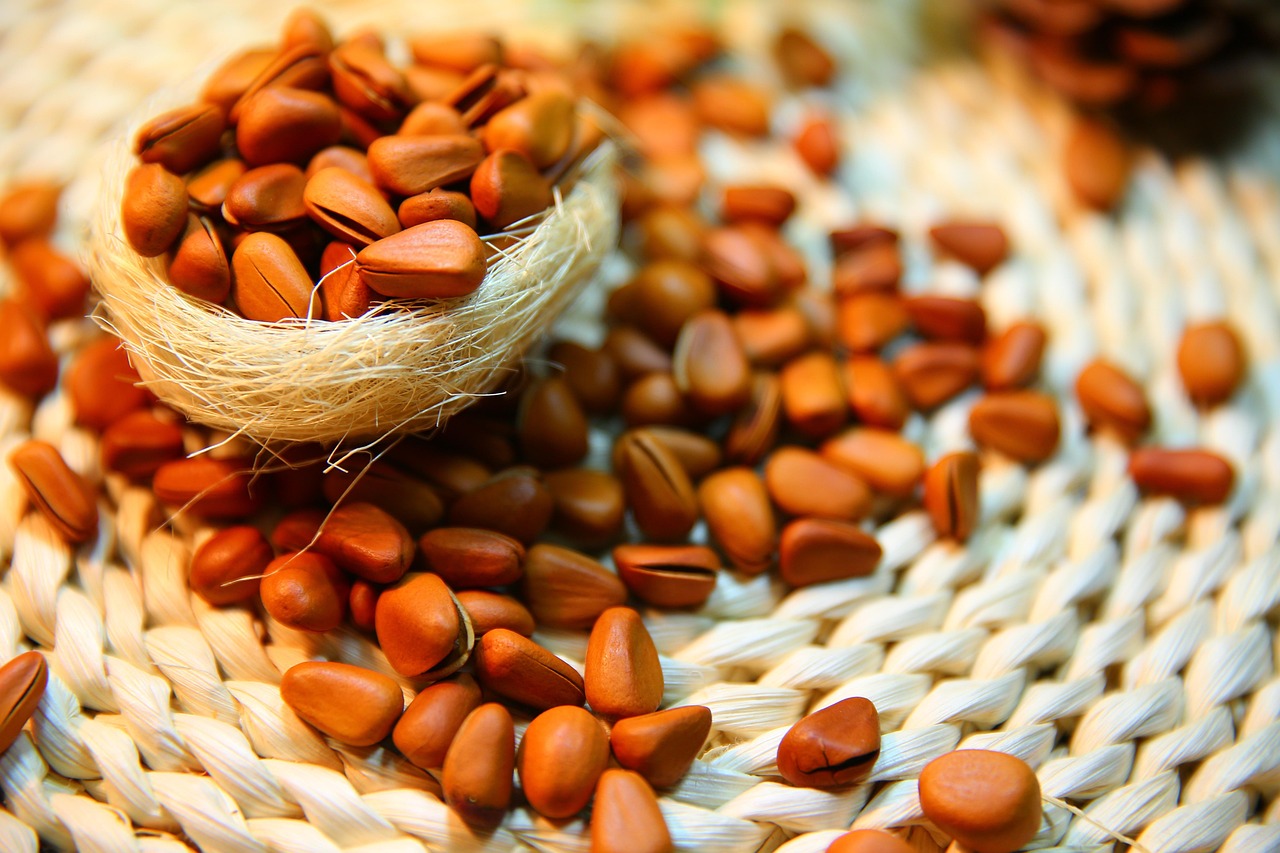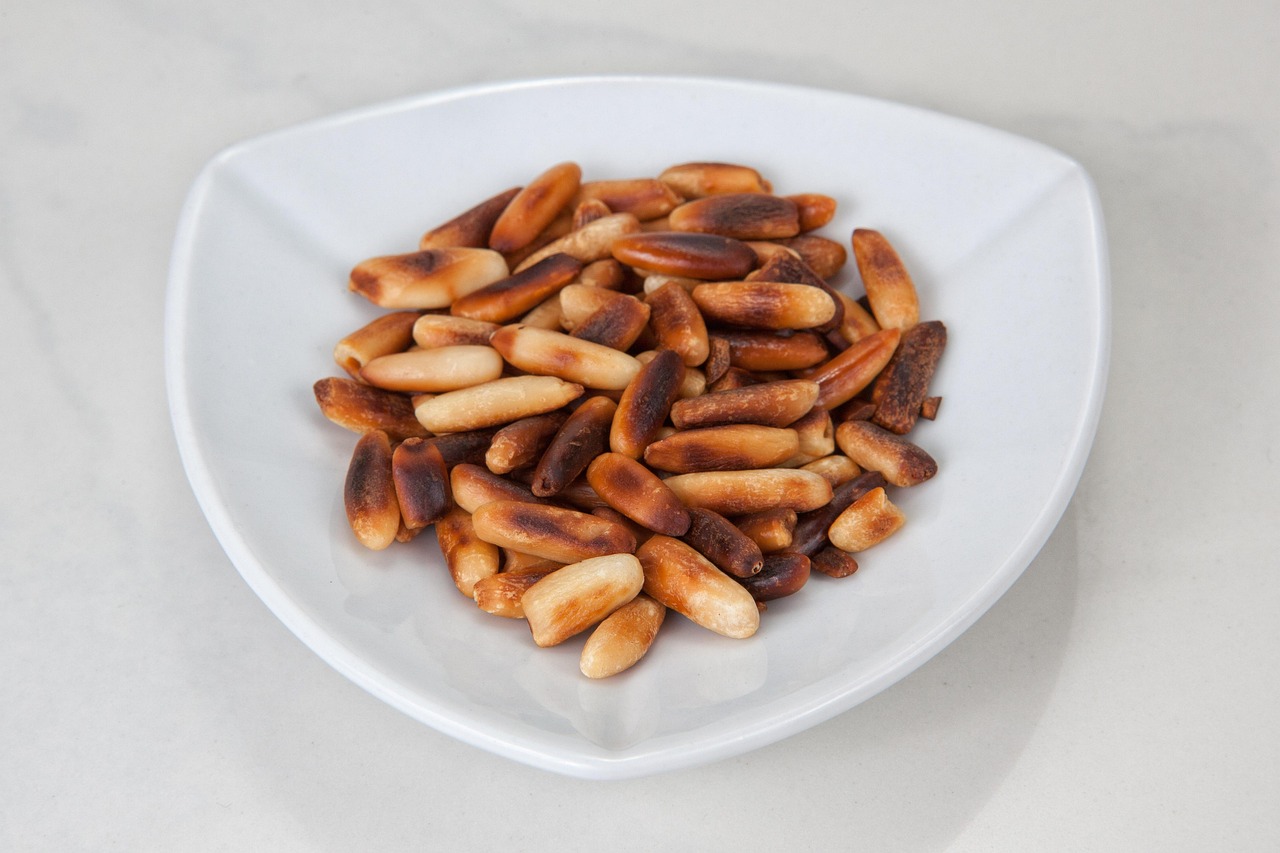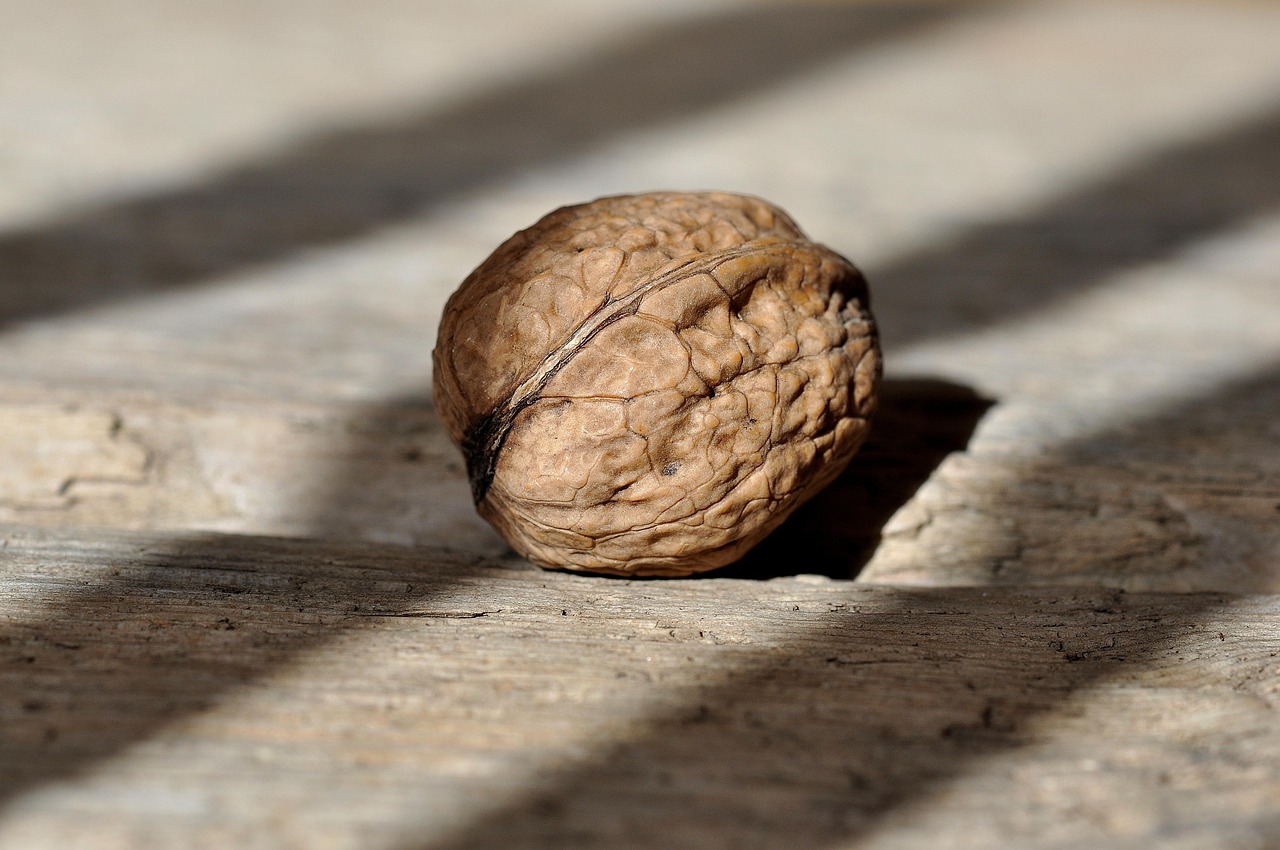The Loblolly Pine, scientifically known as Pinus taeda, produces edible pine nuts that are flavorful and nutritious. These nuts are small, elongated seeds found within pine cones and can be enjoyed raw or roasted. Their taste is often compared to that of sunflower seeds and they are a great addition to various dishes.
Introduction to Loblolly Pine

The Loblolly Pine is a common tree species found in the southeastern United States. This tree is known for its tall stature, straight trunk, and distinctive needles. Loblolly Pines typically thrive in warm, humid climates and often grow in sandy soils. They play a crucial role in local ecosystems, providing habitat for wildlife and contributing to soil stability.
In addition to their ecological importance, Loblolly Pines have significant economic value. Their wood is highly sought after for construction, paper products, and furniture manufacturing. However, beyond timber, the tree also offers edible treasures: its pine nuts.
Understanding Pine Nuts
Pine nuts are the edible seeds of various pine trees. Each type of pine produces seeds with unique flavors and characteristics. The Loblolly Pine’s seeds are particularly prized for their rich taste and versatility in culinary applications.
Pine nuts are high in protein, healthy fats, vitamins, and minerals. They are an excellent source of energy and contain antioxidants that can benefit overall health. Here are some key nutritional aspects of pine nuts:
| Nutrient | Amount (per 1 oz) |
|---|---|
| Calories | 191 |
| Protein | 4 g |
| Fat | 19 g |
| Carbohydrates | 4 g |
| Vitamin K | 13% of the Daily Value |
| Magnesium | 8% of the Daily Value |
The flavor profile of Loblolly Pine nuts is buttery and slightly sweet. This makes them a delightful addition to a variety of dishes. They can be used in salads, pesto, baked goods, or simply enjoyed as a snack on their own.
Harvesting Pine Nuts
Harvesting pine nuts from Loblolly Pines can be a rewarding experience. The process typically occurs in late summer to early fall when the cones are mature. Here are the steps involved in harvesting:
- Identify mature cones on the tree. Look for those that are brown and starting to open.
- Carefully remove the cones from the tree using a pole saw or by hand.
- Place the cones in a container for transport.
- Allow the cones to dry at room temperature until they fully open.
- Extract the seeds from the opened cones.
Pine nuts can be enjoyed fresh or stored for later use. When stored properly in an airtight container, they can last for several months. Roasting the nuts enhances their flavor and makes them even more enjoyable in various recipes.
It’s important to note that while Loblolly Pine nuts are edible, some individuals may have allergies to pine nuts in general. Always consult a healthcare professional if you are unsure about food allergies or dietary restrictions before consuming them.
Culinary Uses of Loblolly Pine Nuts
Loblolly Pine nuts are not only nutritious but also versatile in the kitchen. Their distinctive flavor can enhance various dishes, making them a popular ingredient in many recipes. Here are some common culinary uses for these tasty nuts:
- Salads: Add roasted pine nuts to salads for a crunchy texture and nutty flavor.
- Pesto: Use pine nuts as a substitute for traditional ingredients in pesto sauce, contributing a rich, buttery flavor.
- Baked Goods: Incorporate pine nuts into cookies, muffins, and bread for added taste and nutrition.
- Snacks: Enjoy them raw or roasted as a healthy snack on their own.
- Garnishes: Sprinkle toasted pine nuts on top of dishes like pasta or vegetables to enhance both taste and presentation.
Preparing Pine Nuts
Before using Loblolly Pine nuts in your cooking, it’s important to prepare them properly. This ensures that their flavor is maximized and they are safe to eat. Here are some preparation tips:
- Cleaning: Rinse the pine nuts under cold water to remove any dirt or debris. Pat them dry with a clean towel.
- Roasting: To enhance their flavor, roast pine nuts in a dry skillet over medium heat. Stir frequently to prevent burning and roast until golden brown, usually about 5-7 minutes.
- Storage: Store any unused pine nuts in an airtight container in the refrigerator or freezer to maintain freshness. This helps prevent them from going rancid.
Nutritional Benefits of Pine Nuts
The nutritional profile of Loblolly Pine nuts is one of the reasons they are widely appreciated. They are packed with beneficial nutrients that contribute to overall health. Here are some key benefits:
- Healthy Fats: Pine nuts are rich in monounsaturated fats, which are known to support heart health by reducing bad cholesterol levels.
- Protein Source: They provide a good amount of plant-based protein, making them an excellent addition to vegetarian and vegan diets.
- Vitamins and Minerals: Pine nuts are a great source of vitamins such as vitamin K and B vitamins, along with essential minerals like magnesium, phosphorus, and zinc.
- Antioxidants: These nuts contain antioxidants that help combat oxidative stress in the body, potentially lowering the risk of chronic diseases.
Potential Health Concerns
While Loblolly Pine nuts offer numerous health benefits, there are also potential concerns to be aware of. Understanding these can help you enjoy them safely:
Pine Nut Syndrome
A notable health issue related to pine nuts is a condition known as “pine nut syndrome.” This condition can cause a bitter or metallic taste in the mouth after consuming certain varieties of pine nuts. The symptoms typically last from a few days to two weeks but do not pose serious health risks. It is believed to be linked to specific species, though it is still under research.
Allergies
As mentioned earlier, some individuals may have allergies to pine nuts. It is essential to recognize the symptoms of a food allergy, which may include:
- Itching or swelling in the mouth or throat
- Skin reactions such as hives
- Difficulties breathing or wheezing
- Gastrointestinal symptoms like nausea or diarrhea
If you experience any of these symptoms after eating pine nuts, seek medical attention immediately. Always consult with a healthcare professional if you have known allergies or concerns regarding new foods in your diet.
Pine Nuts in Different Cuisines
Pine nuts have been used across various cultures and cuisines worldwide. They add unique flavors and textures to dishes. Here are some examples of how different cuisines utilize pine nuts:
- Mediterranean Cuisine: Frequently used in pesto and salads, pine nuts are a staple in Mediterranean cooking.
- Middle Eastern Cuisine: Used in dishes like pilafs and baklava, they add richness and depth of flavor.
- Italian Cuisine: Commonly found in pasta dishes and as toppings for pizzas, enhancing the overall taste profile.
The adaptability of Loblolly Pine nuts makes them an exciting ingredient for home cooks and chefs alike, providing opportunities for creativity in the kitchen.

Environmental Impact of Loblolly Pine
The Loblolly Pine plays a significant role in its ecosystem. As a native species in the southeastern United States, it contributes to biodiversity and helps maintain ecological balance. Understanding its environmental impact is essential for promoting sustainable forestry practices and preserving natural habitats.
Habitat and Ecosystem Contributions
Loblolly Pines thrive in a variety of habitats, particularly in wetlands and upland areas. They provide shelter and food for numerous wildlife species, including birds, mammals, and insects. Here are some ways they contribute to their environment:
- Wildlife Habitat: Loblolly Pines create habitats for various species. Birds such as the red-cockaded woodpecker rely on these trees for nesting and foraging.
- Soil Stabilization: The extensive root system of Loblolly Pines helps prevent soil erosion and promotes soil health by maintaining structure.
- Carbon Sequestration: Like all trees, Loblolly Pines absorb carbon dioxide from the atmosphere, contributing to climate change mitigation by storing carbon in their biomass.
Pine Forest Management Practices
Effective management practices are crucial for ensuring the sustainability of Loblolly Pine forests. These practices not only enhance timber production but also protect the environment. Some common methods include:
- Selective Logging: Instead of clear-cutting, selective logging allows for the careful removal of certain trees while preserving the overall forest structure.
- Reforestation: Planting new Loblolly Pine seedlings after harvesting ensures continuous forest cover and maintains habitat for wildlife.
- Controlled Burns: Implementing controlled burns can help reduce underbrush, prevent wildfires, and promote the growth of healthy trees.
Growing Loblolly Pine at Home

If you have an interest in growing Loblolly Pines, either for their nuts or as ornamental trees, there are several factors to consider. They can be grown successfully in home gardens and landscapes with the right conditions.
Ideal Growing Conditions
Loblolly Pines prefer specific environmental conditions to thrive. Here are the key requirements:
- Soil: Well-drained sandy or loamy soils are ideal. They can tolerate some clay but require good drainage to prevent root rot.
- Sunlight: These pines need full sun to grow robustly. Aim for at least six hours of direct sunlight each day.
- Watering: Young trees require consistent moisture during their establishment phase. Once established, they are relatively drought-tolerant.
Planting and Care Tips
When planting Loblolly Pine trees, follow these steps for success:
- Selecting a Site: Choose a location with ample sunlight and space for growth. Ensure the area is free from competing vegetation.
- Planting: Dig a hole twice the width of the root ball but no deeper than the root collar. Place the tree in the hole and backfill with soil.
- Mulching: Apply a layer of mulch around the base to retain moisture and suppress weeds.
- Regular Monitoring: Check for pests and diseases regularly. Healthy trees will require less intervention.
Culinary Preservation Techniques
If you harvest Loblolly Pine nuts, you may want to preserve them for future use. There are several methods to ensure their flavor and nutritional value remain intact.
Dried Pine Nuts
Drying is an effective way to preserve pine nuts. Follow these steps:
- Clean: Ensure that the nuts are clean and free from debris.
- Spread Out: Place them on a baking sheet in a single layer.
- Drying: Use a dehydrator or place in an oven set to low heat (around 150°F) until fully dried, which usually takes several hours.
Freezing Pine Nuts
Freezing is another excellent option to preserve pine nuts:
- Preparation: Clean and dry the nuts as described above.
- Airtight Container: Place the pine nuts in an airtight container or freezer bag to prevent freezer burn.
- Labeling: Label the container with the date before placing it in the freezer. Frozen pine nuts can last up to a year.
Using these preservation techniques will allow you to enjoy Loblolly Pine nuts long after the harvest season has ended, adding their unique flavor to your dishes throughout the year.
Potential Culinary Innovations with Loblolly Pine Nuts
As culinary trends evolve, the use of Loblolly Pine nuts is expanding beyond traditional recipes. Chefs and home cooks are experimenting with innovative ways to incorporate these nuts into modern cuisine. Here are some potential culinary innovations:
Infused Oils
Creating infused oils using Loblolly Pine nuts can add a unique flavor to dressings and marinades. To make infused oil:
- Choose Oil: Select a neutral oil such as grapeseed or olive oil.
- Combine Ingredients: Mix oil with lightly toasted pine nuts in a jar.
- Infuse: Let the mixture sit in a cool, dark place for about a week, shaking occasionally. Strain the oil before use.
Pine Nut Milk
Pine nut milk is an alternative to dairy or nut milks and can be made easily at home. Here’s how:
- Soak Nuts: Soak a cup of pine nuts in water for 4-6 hours.
- Blend: Drain and rinse the nuts, then blend them with 3-4 cups of water until smooth.
- Strain: Use a cheesecloth or fine mesh strainer to separate the milk from the pulp.
Pine Nut Flour
Pine nuts can also be ground into flour, providing a gluten-free alternative for baking. To make pine nut flour:
- Process Nuts: Use a food processor to grind toasted pine nuts until they reach a fine flour consistency.
- Sift: Sift the flour to remove any larger pieces.
- Store: Keep the flour in an airtight container in the refrigerator for freshness.
Sustainable Harvesting Practices

As interest in foraging and sustainable practices grows, it’s essential to emphasize responsible harvesting of Loblolly Pine nuts. Sustainable practices help preserve natural populations and ensure future availability. Here are some guidelines:
- Harvesting Sparingly: Only take what you need. Leave enough nuts for wildlife and to allow for regeneration.
- Avoid Overharvesting: Be mindful of local regulations and guidelines regarding harvesting wild plants and seeds.
- Educate Yourself: Understanding the growth cycles and habitat needs of Loblolly Pines can help inform responsible foraging practices.
Final Thoughts
Loblolly Pine nuts offer a unique blend of flavor and nutrition, making them a valuable addition to various culinary applications. From traditional recipes to innovative dishes, these nuts have proven their versatility in the kitchen. As awareness grows about their health benefits and environmental importance, more people are likely to explore their uses.
The sustainable harvesting of Loblolly Pines is crucial for maintaining both ecological balance and community resources. By implementing responsible practices, individuals can enjoy these delicious nuts while ensuring their availability for future generations. As you experiment with Loblolly Pine nuts in your cooking, remember to appreciate not only their taste but also their role in the ecosystem and our culinary heritage.
Whether you are a seasoned chef or a home cook, incorporating Loblolly Pine nuts into your meals can elevate your dining experience. Embrace the creativity they inspire and enjoy the rich flavors they bring to your table.
